Discover Austin's Architectural Marvels: Top Ten Sites
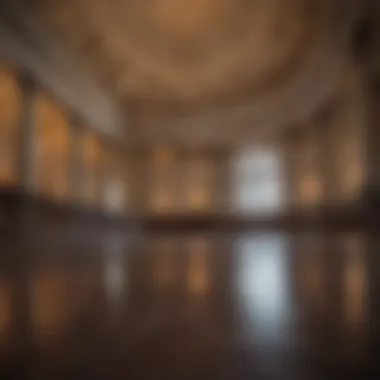
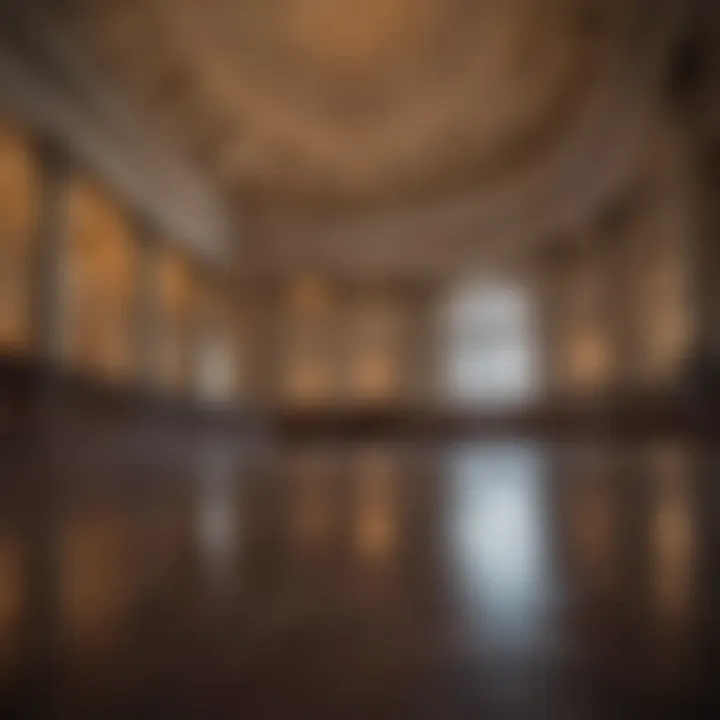
Intro
Austin, Texas, often termed the “Live Music Capital of the World,” is also a gem for architecture enthusiasts. The city boasts a distinctive mix of historical and contemporary designs, showcasing cultural narratives and artistic expressions that define its character. This exploration peels back the layers of Austin’s architectural identity, spotlighting its top ten architectural wonders and the destinations that have helped shape its skyline.
From the grandeur of the Texas State Capitol to the understated beauty of the contemporary houses dotted throughout the hills, each of these sites tells a story. They reflect not only the evolution of architectural trends over decades but also the spirit of the community that surrounds them. Whether you’re a real estate enthusiast, a travel lover, or someone intrigued by interior design, this article promises a deep dive into what makes Austin’s architectural landscape truly exceptional.
By uncovering the significance of each structure, we aim to inspire appreciation for the intricate details that breathe life into the city’s environment, making it a fascinating destination for both locals and visitors alike. Let's embark on this journey and explore what architectural brilliance Austin has to offer.
Featured Homes
In this section, we delve into notable residences that resonate with artistic flair and historical significance, illustrating how architecture has evolved with the city’s narrative.
Architectural Highlights
Austin is home to an array of homes that reflect diverse architectural styles:
- The Driskill Hotel: Completed in 1886, this landmark is a quintessential piece of Romanesque architecture with richly detailed walls and opulent interiors.
- The Hogg Foundation House: A prime example of the American Craftsman style, featuring striking wooden beams and open floor plans unique to early 20th-century design.
- The Seaholm Power Plant: Now transformed into a mixed-use development, this former power plant melds Industrial-era design with contemporary aesthetics, showcasing Austin’s ability to adapt and innovate.
Each of these buildings tells a narrative about the city’s past, present, and even future ambitions.
Interior Design Themes
Beyond the facade, the interiors of these featured homes often echo their architectural styles:
- Art Deco Influence: In places like The Driskill, you’ll find elegant furnishings and intricate details in bronze and marble that evoke a sense of grandeur.
- Sustainable Materials: Many modern residences use reclaimed wood, bamboo flooring, and energy-efficient systems, reflecting a growing trend towards sustainability in residential design.
- Open Concept Living: Homes often boast airy spaces that foster a sense of connection and flow, which is particularly appealing in the context of Austin’s communal lifestyle.
Moving forward, we will shift focus to the location spotlights that showcase how Austin's architectural wonders align with natural beauty and cultural significance.
Location Spotlights
Austin is not just about individual buildings; it also encompasses places where architecture meets the landscape and cultural heritage.
Cultural Significance
Every architectural wonder in Austin is often intertwined with the city's vibrant culture:
- The University of Texas at Austin: This campus reflects a mix of different architectural styles, housing historic structures alongside contemporary buildings, fostering a rich educational environment.
- The Texas State Capitol: More than just a seat of government, its stunning dome is a symbol of Texas pride and resilience, an architectural landmark that connects the past with the present.
Natural Wonders
Cascading alongside these architectural marvels, Austin's natural landscape enhances the city’s allure:
- Lady Bird Lake: Nestled against the backdrop of downtown, the parks and trails around Lady Bird Lake create a harmonious blend of nature and city life.
- Mount Bonnell: This elevated viewpoint offers a stunning panoramic of the cityscape, making it a popular spot for both locals and tourists seeking a breath of fresh air amidst architectural beauty.
The interplay of these structures with Austin’s natural beauty creates a unique experience, often surprising visitors with the unexpected tranquility found in an urban setting.
"Architecture should speak of its time and place, but yearn for timelessness." - Frank Gehry
With these remarkable insights into the architectural highlights and location spotlights in Austin, the exploration continues to uncover the city’s diverse tapestry.
As this article unfolds further, expect to delve deeper into the remaining architectural wonders that further define what makes Austin a unique blend of history, creativity, and passion.
Intro to Austin's Architectural Landscape
Austin's architectural landscape stands as a testament to the city's growth and identity, reflecting a tapestry of history, cultural evolution, and innovative design. Architecture in Austin is not merely about the structures themselves; it embodies the spirit of the community, the traditions, and the forward-thinking mindset that characterizes this Texan capital.
Understanding this landscape is crucial for those who wish to appreciate the city in a deeper sense. By exploring the architectural styles and trends, readers can glean insights into how Austin has transformed over the years while maintaining a connection to its roots. This insightful journey reveals how architecture functions as a mirror to societal changes, environmental concerns, and even artistic expression.
Why is this topic significant?
- Cultural Reflection: Architecture tells stories. Each building has a narrative, inviting conversations about its purpose and impact on the surrounding environment.
- Community Connection: Buildings often serve as gathering places, fostering social interaction and community engagement - think of the public libraries or vibrant local cafes.
- Economic Considerations: Architectural trends can influence property values; thus, understanding them is essential for real estate enthusiasts aimed at making informed decisions in the Austin market.
- Aesthetic Appeal: The visual charm of a city is closely tied to its buildings, affecting how both locals and tourists perceive Austin.
In summary, uncovering Austin's architectural landscape allows one to appreciate not just the physical beauty but also the sociocultural dynamics at play. Whether one is drawn to the quirky homes in South Congress or the sleek lines of the latest office towers in the downtown area, each structure contributes to a city that is ever-evolving yet steadfast in its unique character.
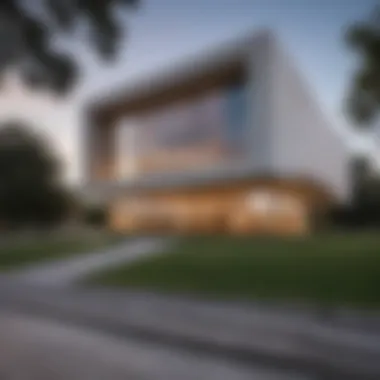
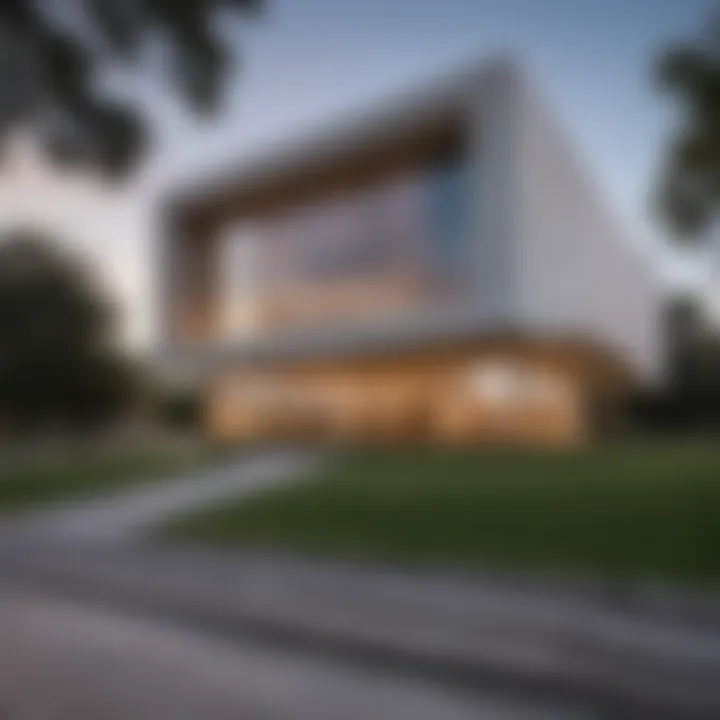
The Cultural Significance of Architecture in Austin
As Austin has burgeoned into a prominent city, its architecture has become as varied as its populace. The cultural significance of architecture here cannot be overstated. Historical influences blend with modern aspirations, creating a rich environment where both old and new coexist in harmony.
Buildings like the Texas State Capitol are a link to the past, evoking pride and nostalgia, while contemporary edifices like The Blanton Museum of Art offer fresh perspectives and engage with visitors through innovative designs.
Architecture shapes collective memory as communities reflect on their past, and this is particularly visible in Austin. Local festivals, art events, and public music concerts often take place in spaces designed not just to be functional but also to enhance social interaction and community engagement.
The power of architecture here extends beyond aesthetics; it's intertwined with identity. This city dances between being a lively tech hub and a culturally rich heritage site, which resonates in the new constructions that often pay homage to the traditional.
How Austin Balances Modernity and Tradition
Austin's approach to balancing modernity with tradition has been a delicate dance, often showcasing an architectural dialogue that speaks to both innovation and reverence. This city is not shy about embracing change, but when it comes to its buildings, there’s a strong inclination to respect what’s already there.
Take, for example, the design of the new Central Library. While it boasts cutting-edge features and sustainable technologies, the architect took cues from the nearby historic structures, ensuring that it felt part of the same fabric.
Some ways Austin achieves this balance include:
- Adaptive Reuse: Old warehouses turned into lofts or trendy eateries reveal how history is preserved while infusing new life into obsolete structures.
- Community Inputs: Public forums often give residents a voice in design decisions, promoting buildings that resonate with what the community desires and respects.
- Zoning and Preservation Laws: The city has put measures in place to protect historical sites while permitting modern development, ensuring that Austin grows without losing its charm.
Through this blend, Austin stands not as a city stagnant in the past but as one that continually reinvents itself while valuing the stories embedded in its architecture. It's a careful balance, one that celebrates history while also welcoming change with open arms.
Defining Austin's Architectural Styles
When delving into the architectural essence of Austin, one must appreciate the distinct styles that have woven a rich tapestry throughout the city’s landscape. This section not only highlights these styles but also serves as a compass for understanding the intricate relationship between culture, history, and modern innovation in design. Defining Austin's architectural styles allows visitors and locals alike to connect deeply with their surroundings, fostering a sense of pride and identity in the built environment.
The Role of Historical Influences
Austin's architectural narrative is rooted in its historical context. The city was established in the early 19th century and has since evolved, adopting various influences from its Texas neighbors and beyond. Exploring the past through its buildings offers a glimpse into the lives and aspirations of the communities that have shaped it.
Take, for instance, the Spanish Revival style that adorned many of the homes in the 1920s. This design mimicked the aesthetics of early colonial architecture, featuring tile roofs and stucco exteriors, reminiscent of the Spanish missions that once dotted the landscape.
Moreover, the influence of the Texas limestone is evident in many structures, lending a local character that aligns with the natural environment. From the classic Victorian homes in the Old West to the robust structures that mirror the scenery of Texas Hill Country, historical influences have carved out an architectural identity that respects tradition while paving the way for modernity.
"Austin's architecture is a conversation between the past and the present. It's not just about buildings; it's about stories and legacies that each structure holds."
Contemporary Innovations in Design
The architectural scene in Austin doesn't just rest on its laurels of history. In the current age, there's a palpable buzz of innovation resonating through its streets. Newer designs reflect a mindset geared towards sustainability and functionality, ensuring that the modern landscape respects the city's legacy while introducing fresh ideas.
For instance, the Google Austin Campus epitomizes contemporary innovation with its eco-friendly design philosophy. Large glass windows allow natural light to flood in, connecting indoor spaces with the vibrant outdoors. The layout encourages collaboration and creativity, breaking the mold of traditional office space.
Furthermore, many recent residential projects incorporate smart technology, making homes more efficient and interactive. As the city continues to grow, architects are challenged to blend cutting-edge designs with elements that pay homage to Austin's architectural roots. This balance of old and new not only enhances the city's aesthetic but also enriches the living experience for residents and visitors alike.
In summary, defining Austin's architectural styles is crucial in understanding how the city has evolved through the years. By appreciating both the historical influences that laid down the foundation and the innovative designs that are currently shaping its skyline, one gains a fuller appreciation for the complexities of Austin's architectural landscape.
An Analysis of Iconic Structures
An analysis of iconic structures is essential for understanding the architectural intricacies and historical nuances that shape Austin’s identity. Each of these buildings tells its own story, revealing layers of culture, politics, and human emotion intertwined in their design and function. The examination of these monuments fosters an appreciation not just for the aesthetics, but for their significance in the evolution of the city. Through studying these landmarks, one can grasp how architecture serves as a canvas for the dreams and aspirations of its community, while also reflecting the values of the society at large.
The Texas State Capitol: A Historical Perspective
The Texas State Capitol stands tall, a symbol of governance and history for the state. Completed in 1888, it boasts a Renaissance Revival architectural style that is rich in symbolism and significance. The building is made from red granite sourced from the nearby Llano Uplift, illustrating the deep connection to the state’s natural resources.
As you walk through its hallways, you're enveloped by historical grandeur and intricacies of design—whether it’s the impressive rotunda, which is taller than that of the U.S. Capitol, or the busts of influential Texans dotting the halls. The building's aesthetics were thoughtfully crafted to convey strength and stability, serving as a backdrop for pivotal moments in Texas history.
Furthermore, the Capitol isn't just a piece of architectural beauty; it plays a central role in Texas politics. The discussions and decisions made within these walls impact the lives of millions. For visitors and locals alike, the Capitol offers guided tours, providing insights into how Texas government operates while showcasing its architectural marvels.
The LBJ Presidential Library: Modern Meets Historical
The LBJ Presidential Library represents a seamless blend of modernism and historical retrospection. Dedicated to President Lyndon Baines Johnson, this library was designed by architect Gordon Bunshaft, known for his innovative use of materials and light. The design features a sleek, glass-and-concrete exterior that stands in stark contrast to the more traditional buildings around it.
Inside, multimedia displays and historical archives invite visitors to engage with the past, particularly the significant social changes during the 1960s, including civil rights and space exploration. The juxtaposition of modern design and historical narrative emphasizes the complexities of the era, making it a vital site for education and reflection. This structure showcases how contemporary architecture can effectively communicate historical discourse.
The Bullock Texas State History Museum: A Cultural Hub


Next to the State Capitol lies the Bullock Texas State History Museum, serving not just as a museum but as a cultural touchstone for Texans. Opened in 2001, its unique architectural form and design invite curiosity. The building’s exterior features a combination of limestone and glass, creating visual harmony with its surroundings.
Inside, the museum hosts permanent and rotating exhibits that cover the comprehensive history of Texas. Through immersive environments and interactive displays, visitors can explore everything from Native American culture to modern technological innovations.
A central feature of the museum is the Texas Spirit Theater, which enhances the narrative experience through its state-of-the-art multimedia presentations. The Bullock Museum embodies the spirit of Texas, acting as a gathering place where history, education, and culture intersect, allowing visitors to engage with the state's rich past and chart its future.
Iconic structures are markers of a city's identity, embodying its heritage and aspirations, thus fostering community connections beyond mere bricks and mortar.
Exemplary Modern Architectural Designs
The architectural landscape of Austin is not just historical; it’s a canvas of modern designs that reflect contemporary tastes and innovations. In this section, we will delve into three exemplary modern architectural designs that stand out in Austin's skyline, showcasing how they contribute to the city’s identity while enhancing its cultural and functional fabric. Each of these structures embodies unique principles of design, serving as a testament to the city’s ability to adapt while retaining its distinctive character.
The Blanton Museum of Art: Contemporary Vision
Nestled within the University of Texas at Austin campus, the Blanton Museum of Art is more than just a museum; it’s an architectural gem that harmonizes art and design. Designed by the renowned architecture firm of tesearch and opened in 2006, the building is a reflection of a visionary approach towards artistic presentation.
- Architectural Features: The museum's facade is characterized by its simple yet striking lines, clay-colored brick, and expansive glass walls, which invites natural light into the galleries. The design emphasizes open space, allowing visitors to experience art in a fluid and engaging manner.
- Cultural Impact: As one of the largest university art museums in the United States, Blanton's architecture not only showcases its collection of more than 21,000 works of art but also creates a community space that draws in both locals and visitors alike.
Overall, Blanton Museum embodies the essence of modern architecture, marrying functionality with aesthetic appeal.
The Google Austin Campus: Innovative Spaces
In the heart of the tech industry, the Google Austin Campus reflects the dynamic nature of modern office space architecture. Completed over multiple phases, this campus isn’t just an office; it’s a vibrant ecosystem designed for innovation.
- Design Philosophy: The design focuses on creating flexible workspaces that encourage collaboration. Open-concept offices, cozy breakout areas, and even on-site amenities such as a fitness center promote a healthy work-life balance.
- Sustainability: One of the major elements of the campus is its commitment to green building practices. Solar panels and sustainable materials are used throughout, illustrating Google's pledge to environmental responsibility.
The Google Austin Campus exemplifies how modern architectural designs can enhance productivity while maintaining a commitment to sustainability.
The Saxon Pub: A Blend of Architecture and Music
One cannot mention modern architecture in Austin without touching on the Saxon Pub, a quintessential venue that reflects the city’s vibrant music culture. Located just off South Lamar Boulevard, this structure is not only a bar and music venue but also an architectural statement of community and creativity.
- Unique Layout: The Saxon Pub features a distinctive design that incorporates recycled materials, giving it a rustic yet inviting feel. Its indoor and outdoor spaces encourage a seamless flow between musicians and audiences.
- Cultural Significance: This venue is a beacon for local music lovers, often hosting celebrated artists. The architectural design fosters a close-knit atmosphere, reinforcing Austin's identity as the
Natural Architectural Wonders
Natural architectural wonders play a crucial role in shaping the identity of Austin. This city isn't just about human-made structures; it's about how those structures coexist with the stunning landscapes surrounding them. Austin's natural beauty exposes the importance of integrating architecture with nature, creating spaces that not only serve a purpose but also enhance the environment.
Natural features like lakes, parks, and trails invite both residents and visitors to partake in experiences that blend enjoyment of the outdoors with an appreciation for thoughtful design. The green spaces in Austin serve as communal areas, fostering a sense of togetherness while offering a respite from the urban hustle.
Understanding the harmony between built environments and nature can lead to healthier living spaces and improved conservation practices. That’s key for any city embracing modern growth without losing sight of its roots. Below are two prominent examples of such integrations in Austin:
Lady Bird Lake: Nature's Integrative Design
Lady Bird Lake stands as a splendid example of how natural landscapes can influence architectural design. This reservoir on the Colorado River not only acts as a waterway but also functions as a recreational hub. The river trails weave through lush vegetation and provide stunning views of the city’s skyline. Lady Bird Lake offers walking, jogging, and biking paths that bring people into close contact with nature while enjoying the rhythm of life in Austin.
The design around the lake encourages outdoor activity, with various parks and amenities dispersed throughout the area. It serves as a connective tissue, linking neighborhoods and promoting sustainable practices like water conservation and habitat preservation. The decision to enhance the area with features like the Boardwalk Trail demonstrates a commitment to blending urban living with nature’s elegance.
Zilker Park: Park Architecture and Community Space
Zilker Park is another jewel in Austin's architectural and natural landscape. Covering about 350 acres, it is often the focal point for community events and gatherings. This park is designed with open spaces, picnic areas, and recreational facilities, fostering a vibrant community spirit.
Zilker Park embodies the concept of park architecture, where the design facilitates community engagement. Notable landmarks like the Zilker Botanical Garden showcase natural beauty through carefully curated plant displays within the park. Whether it's a weekend festival or a casual family outing, this park truly encapsulates the harmony between architecture and nature.
A few things to appreciate about Zilker Park include:
- Diverse Activities: From kayaking on Lady Bird Lake to enjoying outdoor concerts at the Zilker Hillside Theater.
- Eco-Friendly Design: Focus on preserving native plants and natural habitats while enhancing community spaces.
"Nature is not a place to visit. It is home."
— Gary Snyder
Both Lady Bird Lake and Zilker Park illustrate how Austin creatively incorporates its stunning natural elements into the city’s architectural narrative. These places not only enrich the landscape but also enhance the community’s quality of life, solidifying their importance in Austin's diverse architectural tapestry.
Discovering Lesser-Known Architectural Gems
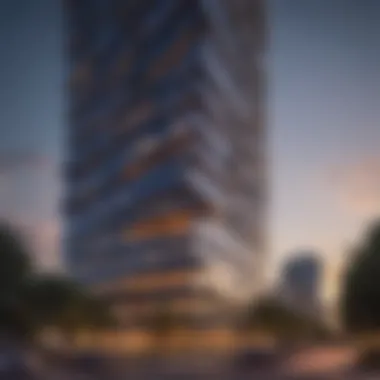
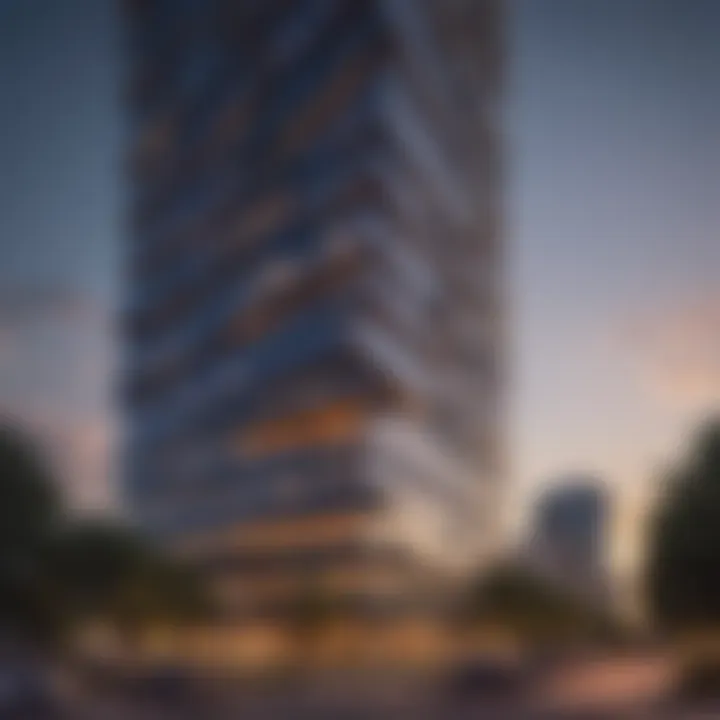
Austin's vibrant architectural landscape isn't solely defined by its renowned landmarks. Among the city's many hidden treasures lay a selection of lesser-known gems, each offering unique narratives and aesthetic splendor. These structures not only emphasize the rich fabric of Austin’s architectural identity but also serve as an invitation for a deeper exploration of the city.
Discovering these lesser-known architectural marvels enriches one’s understanding of Austin beyond the well-trodden paths. These hidden sites exemplify creativity and innovation, showcasing diverse structural styles that balance with the city’s heritage. Choosing to explore these locations fosters a sense of appreciation for the craftsmanship and design that often goes unnoticed. They offer emotional touchpoints; every wall, every arch can tell a story.
Highlighting these gems encourages visitors as well as locals to engage with their environment differently. Instead of just being spectators, they become participants in the unfolding narrative of Austin’s architectural evolution. Whether it’s the intricate design elements or the way these structures integrate into their surroundings, each site brings its own flavor to the potluck that is Austin’s architecture. It's about uncovering beauty in the ordinary, finding depth where others might overlook it.
The ART Building: A Unique Approach to Artistic Space
The ART Building, located on the outskirts of downtown, is a visual treat and a thoughtful blend of functionality and artistry. Designed as a creative hub, this building houses various art studios and galleries, offering an environment where creativity can flourish. The architecture here is not only about aesthetics; it emboldens the spirit of collaboration and innovation.
With a facade that artfully juxtaposes modern glass and traditional materials, the ART Building stands out in its setting. It is a canvas that changes with the passing light, allowing each visitor to experience it differently. The space invites artists from various backgrounds, creating a melting pot of ideas, mediums, and styles. This collaborative mindset is embodied in the interior's open layout, bustling with activity yet peaceful enough for contemplation.
In a city bustling with creative minds, the ART Building creates an essential nexus for artistic exchange, signifying how architecture can serve a community-driven purpose.
"Art is not what you see, but what you make others see." - Edgar Degas
The Chapel of St. Edward: An Oasis of Tranquility
Nestled near the campus of St. Edward’s University, the Chapel of St. Edward stands as a serene sanctuary amidst the lively energy of Austin. This architectural gem may not boast the grandeur of a cathedral, but it offers a profound spiritual presence, creating an intimate atmosphere for reflection and peace.
The chapel’s design draws from a variety of influences, marrying modern elements with traditional Christian motifs. Natural light floods the interior through stained glass windows, creating an enchanting play of colors as it dances across the wooden pews. The use of natural materials embodies a connection to the environment, fostering a comforting space that encourages contemplation.
Moreover, the Chapel of St. Edward goes beyond just serving the university community. It functions as a welcoming space for all, open for worship and personal reflection alike. Its ability to fuse accessibility with peace makes it a remarkable example of how architecture can nourish the spirit.
This lesser-known gem reminds us that sometimes the simplest spaces hold the most profound beauty.
Experiencing Austin Through Its Architecture
Austin's architectural landscape is not just a feast for the eyes; it acts as a gateway to the city’s soul. Each building, each structure offers a glimpse into the history, culture, and aspirations of its people. Engaging with these architectural wonders provides more than just aesthetic pleasure; it's an opportunity to understand the past and appreciate the intricacies of the present. Exploring how architecture shapes experiences can deepen one's connection to the vibrancy of Austin.
Guided Tours: A Deeper Understanding
Guided tours in Austin can be a delightful way to delve beyond the surface of its architecture. With knowledgeable guides, one gains insight into each structure’s historical context, design elements, and the stories behind their creation. For instance, when stepping through the doors of the Texas State Capitol, visitors are often treated to tales of the builders’ ambitions and the intricate details carved into the stone that you might miss without a guide's discerning eye.
These tours not only unveil hidden narratives but also create a sense of community among participants. There's something special about sharing the experience with others who hold a similar appreciation for art and design. The social aspect adds a further layer of enjoyment, while also likely leading to stimulating conversations about the sights and values reflected in the city's architecture.
Self-Guided Exploration: A Personalized Journey
For those who prefer to wander at their own pace, self-guided explorations can offer a tailor-made experience of Austin's architectural marvels. This freedom allows visitors to immerse themselves in their personal interests, whether those lean towards the historical significance of buildings or the cutting-edge designs of modern structures.
A leisurely stroll down South Congress can provide myriad photo opportunities, allowing you to capture the vibrant fusion of urban design and artistic expression. Just remember to map out the highlights ahead of time—there’s plenty to see, and it can be easy to lose track of time while soaking it all in.
"Austin’s architecture is akin to a sprawling timeline, each building a chapter narrating our shared story."
Before setting out, consider breaking down your exploration into specific themes. For example, focus on the blend of historic and modern, or perhaps venture into neighborhoods known for their unique architectural styles.
While touring, always pay attention to the smaller elements that bring each location to life—like the colorful murals or the carefully arranged outdoor spaces that accompany many of the buildings. These details contribute greatly to the overall narrative of Austin's architectural identity, blending function and aesthetic seamlessly.
Both guided tours and self-exploration reveal the multi-layered aspects of Austin's architecture. They underscore the significant role these structures play in shaping local culture and foster a deeper appreciation for the craftsmanship and creativity they embody.
Ending: The Future of Austin's Architectural Identity
The evolving architectural identity of Austin presents a unique narrative, intertwining the city’s historical roots with a vibrant future. As Austin continues to grow and attract diverse populations, the need to harmonize modern developments with its rich architectural heritage becomes ever more pressing. The future is not merely about erecting new buildings; it is also about ensuring that these structures resonate with the cultural and historical ethos of the city. This narrative of balance serves the interests of both the residents and the tourists, creating a multifaceted landscape that celebrates both past and present.
Preserving Heritage Amidst Change
As the skyline changes, preserving the historical essence of Austin poses a significant challenge. The Texas State Capitol, a true emblem of the city, stands as a testament to the past. This structure, with its stunning Renaissance Revival style, reminds us of the strength and resilience of Texas history. Yet newer constructions can sometimes overshadow these historic gems.
It is essential to advocate for preservation efforts, as these old buildings often carry stories and sentiments that newer designs cannot replicate. Here’s how this can be approached:
- Community Involvement: Engage the local populace in discussions about what structures represent their identity.
- Regulatory Frameworks: Support policies that prioritize historical preservation, allowing for adaptive re-use of buildings instead of demolition.
- Education and Awareness: Conduct initiatives that educate residents and visitors about the significance of maintaining these architectural pieces.
"Countless stories are etched in the walls of Austin’s oldest buildings. Losing them would be losing a critical part of who we are."
The Role of Community in Shaping Architecture
The community plays a pivotal role in crafting the architectural narrative of Austin. Local voices bring invaluable perspective and authenticity to development projects. When residents are included in decision-making processes, the results often reflect a deeper understanding of cultural values and needs. Consider the following aspects:
- Public Engagement: Holding town hall meetings and workshops where community members can share their vision for architectural developments.
- Collaborative Projects: Involving local artists and artisans in architectural designs fosters a sense of ownership and pride.
- Feedback Mechanisms: Establishing platforms through which the public can voice their opinions on proposed developments allows for a more democratic approach to urban design.
The future of Austin's architecture hinges not only on the architects and planners but also on the local community that shapes its narrative. Every voice matters in this dialogue, ensuring that the city's architectural identity evolves organically, respecting its roots while embracing what lies ahead.







